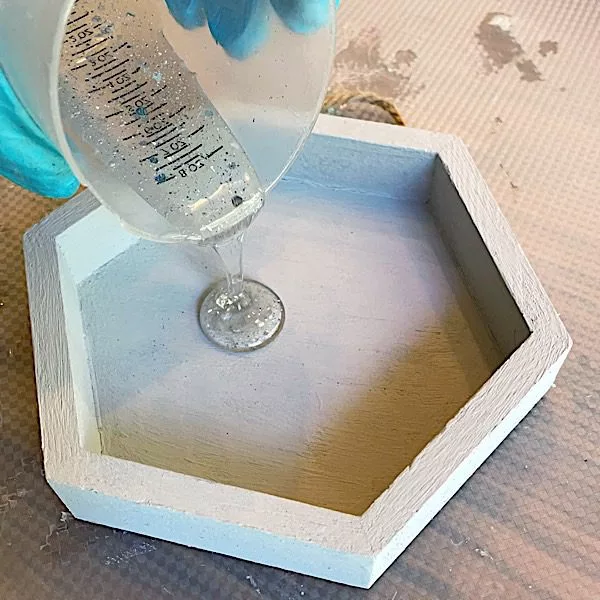
How long does epoxy take to cure?
How long does epoxy take to dry?
If you’re searching for the answer to any of those situations, they’re all the same question.
Essentially, you want to know how long it takes for epoxy resin to go from a liquid to a solid.
A good rule to follow is that epoxy sets in seven days. But…
You Resin Obsession OGs knew there was going to be a BUT
There’s more to know about how long an epoxy takes to cure.
Because different epoxy types have different curing times.
Some epoxy formulas can be 90 percent cured in 24 hours, but a slow-curing epoxy will need at least three days to cure. And to get the hardest cure possible, you should give any epoxy resin seven days to cure.
The best way to know when your epoxy should set is to read your resin kit’s instructions. You should see this included as the cure time.
⭐️ BONUS: We’ve got epoxy dry time information (and more) for you in our resin buying guide.
What else impacts how long it takes until epoxy sets?
The biggest factor here is heat — from the reaction and the surrounding environment.
I won’t go all crazy into what resin is. But, the crucial thing to know is that a chemical reaction occurs when you mix epoxy and hardener. That reaction produces heat which makes the epoxy harden.
The thicker the resin mass, the quicker the resin heats, and the longer it stays hot. If you make a thinner resin layer, it will take your epoxy resin longer to dry because the reaction heat is spread thin.
Plus, your casting area must stay in the low 70s F. A cold room will suck the heat off your resin and make it take longer to cure. And it might cure bendy or not at all.
What about using a fan to dry epoxy?
While a fan is excellent for improving room ventilation (an essential part of resin safety), it will cool off your resin. So unless you’re pouring something thick, like an epoxy table, you don’t want to use a fan.
What happens if you touch epoxy before it dries?
Have you ever touched gelatin before it was solid? The same thing happens to epoxy resin. The evidence of your misstep is left behind as divots and dimples. Partially cured epoxy will also take on your fingerprints.
What if it’s past an epoxy’s dry time and not solid?
There’s no one-size-fits-all all answer. It can be related to temperature, moisture, or techniques.
⭐️ BONUS: Here’s a list of 12 reasons resin doesn’t cure.
Can you reduce the time epoxy goes from a liquid until it sets to a solid?
Yes. But do you really need to?
I get that waiting for epoxy to dry is (sometimes) the hardest part. If you don’t have to speed up epoxy curing, don’t.
Resin getting too hot is one of the reasons it flash cures, which ruins everything.
Overwhelmed by all the information about using epoxy resin?
I get it. You can spend hours in a resin rabbit hole only to have no better idea of how to use it than when you started. It’s why I wrote the ebook Resin Fundamentals. For less than the cost of a resin kit, you can learn the essential resin details in only a couple of hours. Buy the PDF book now and get a download link in minutes.
Unpublished Blog Posts of Resin Obsession, LLC © 2023 Resin Obsession, LLC






I have a question in the opposite trend: what if I have epoxy resin set inside a silicone mold, but I effectively want to allow it to set-up, and then delay its curing for many many days? my goal is basically to partially cure the resin in the silicon mold, which is currently laying flat – and also suspend that partially-cured state in time, more or less indefinitely, and when I am ready for it, I would remove the resin from the mold, apply it to another surface that is curved or not flat, so that when it cures entirely, the resin fully holds its ‘form’ etc until it takes on that new shape while fully curing…. I don’t know if that makes sense… I can make a drawing that illustrates this if necessary?? I understand entirely that resin can partially cure and be reworked into a new non-flat shape etc, I just want to know if I can suspend the partially-cured state for several days? (IE: I want to do batch epoxy pours – dozens of molds poured at the same time – then suspend the partially-cured state, and hence batch the epoxy inlays when I am ready for them, if that makes sense?)